Concept Demonstration
This is a forward-looking vision of how AI could transform university libraries. It’s not based on a current implementation, but on what’s technically possible today.
The reality check
Walk into any university library at 2 AM during finals week. You’ll find students hunched over laptops, surrounded by printed articles, sticky notes everywhere, and multiple browser tabs open trying to navigate different library systems. They’re stressed, overwhelmed, and spending more time fighting technology than actually learning.
Sarah Chen, a computer science student, used to be one of them. Finding the right machine learning textbook meant searching three different databases, checking physical availability, and hoping the study rooms weren’t all booked when she finally got there.
One interface, everything connected
Now imagine Sarah opens the library website and sees her AI librarian waiting. The interface greets her personally, understanding exactly who she is and what kind of help she might need.
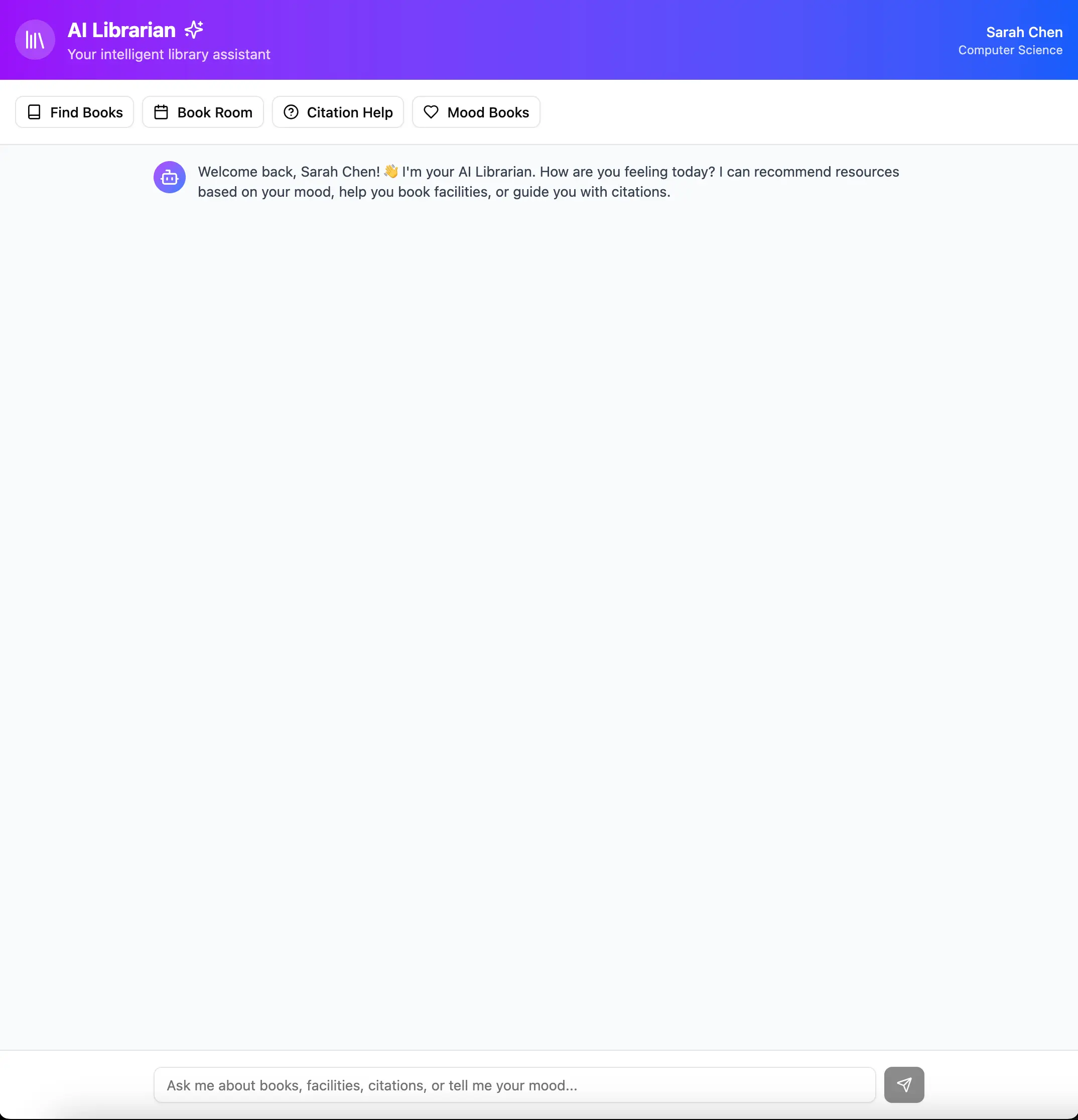
She types: “I need books on machine learning.”
Instantly, the AI understands her intent and delivers something no traditional chatbot can: rich, visual results integrated directly from the library’s catalog systems. Each book appears with cover art, peer ratings, real-time availability, and call numbers. Christopher Bishop’s Pattern Recognition and Machine Learning shows as available with a 4.8 rating. Deep Learning by Goodfellow shows “2 copies available.” MIT’s online course appears as a digital resource, ready to access.
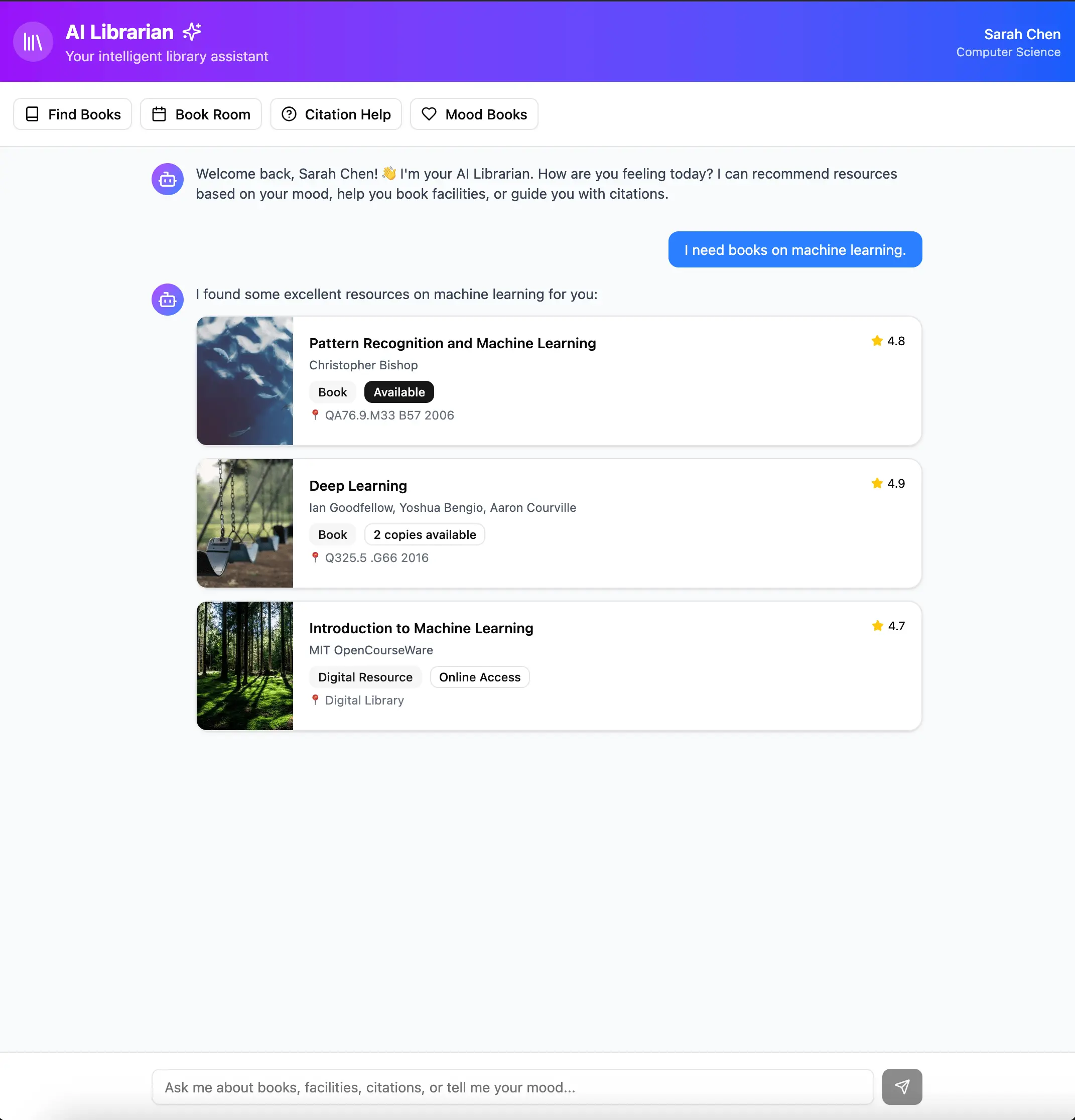
This goes far beyond the typical chatbot experience of “Here are some links.” The AI has actually searched the systems, checked availability, and presented actionable information—all in one place.
More than search: a complete library assistant
Sarah’s machine learning search is just the beginning. The AI librarian handles everything from study room bookings to citation help through the same natural interface.
When she needs a study space, she simply types:
“Book a study room for tomorrow.”
The AI presents available options with real-time booking details.
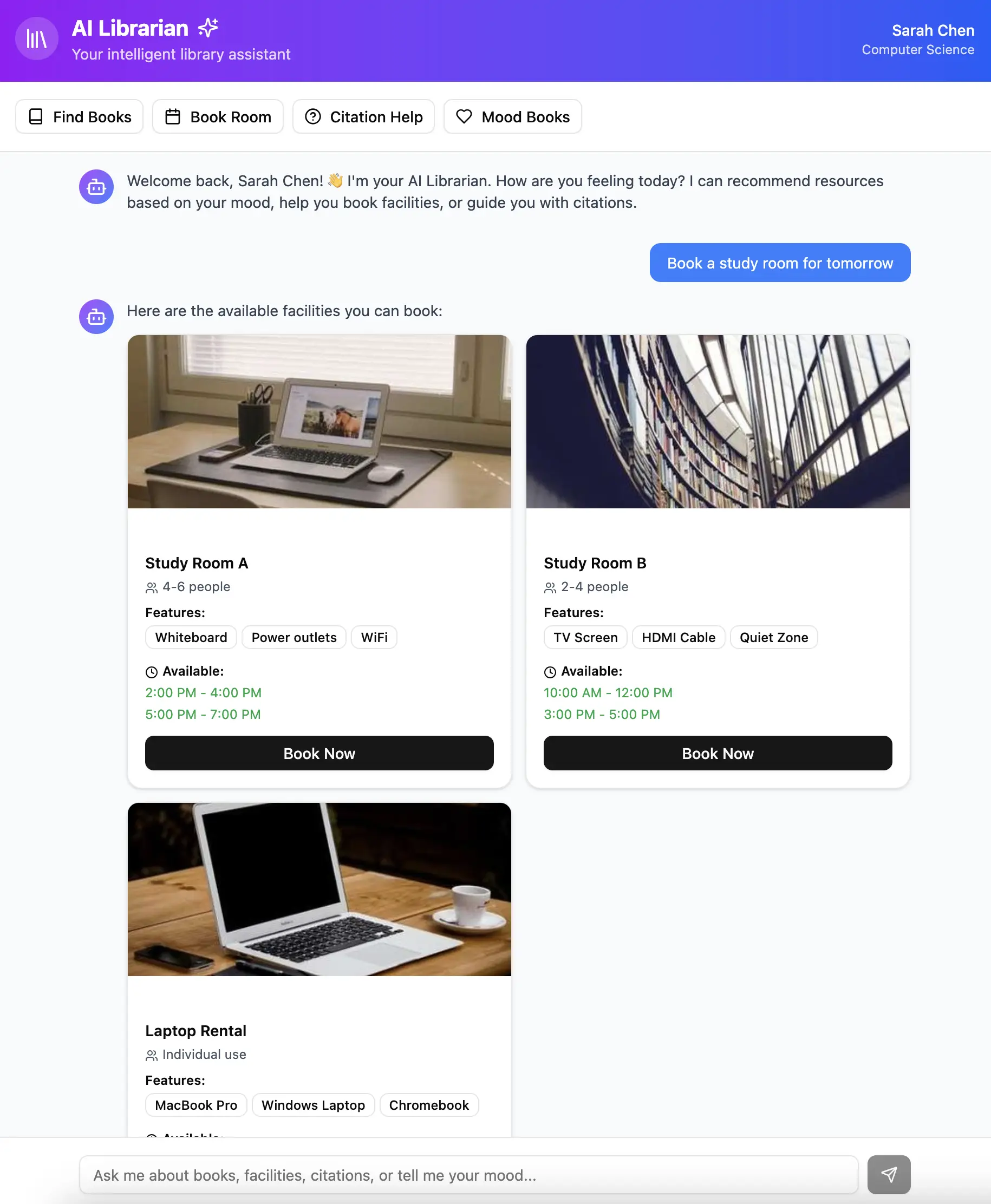
The system even understands emotional context. When Sarah says, “I’m feeling happy,” the AI shifts into mood-based discovery, suggesting light reading and books for stress relief.
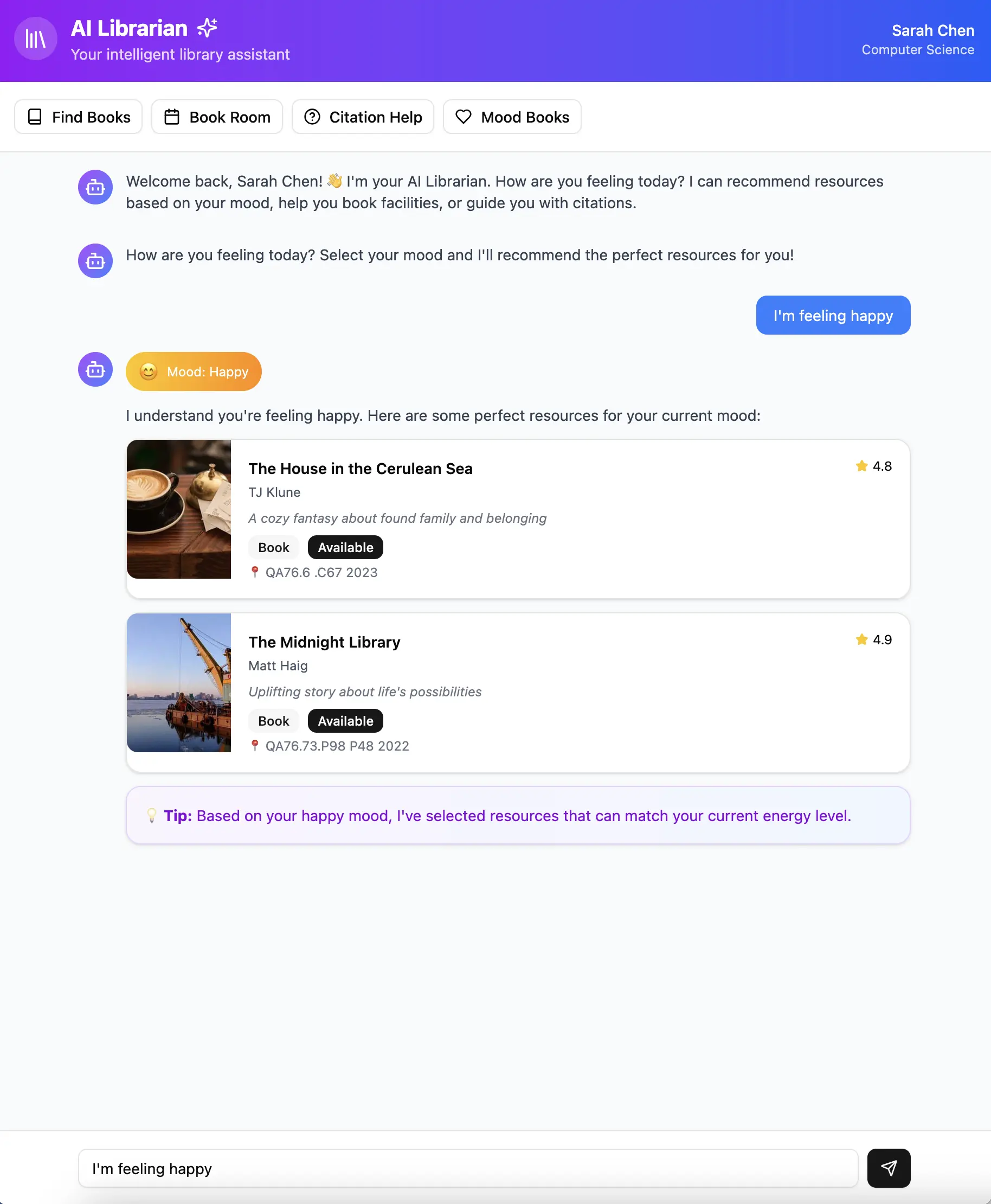
Need citation help? Sarah pastes in a source and asks:
“How do I cite a journal article in APA?”
The AI generates the citation instantly, and explains the format.
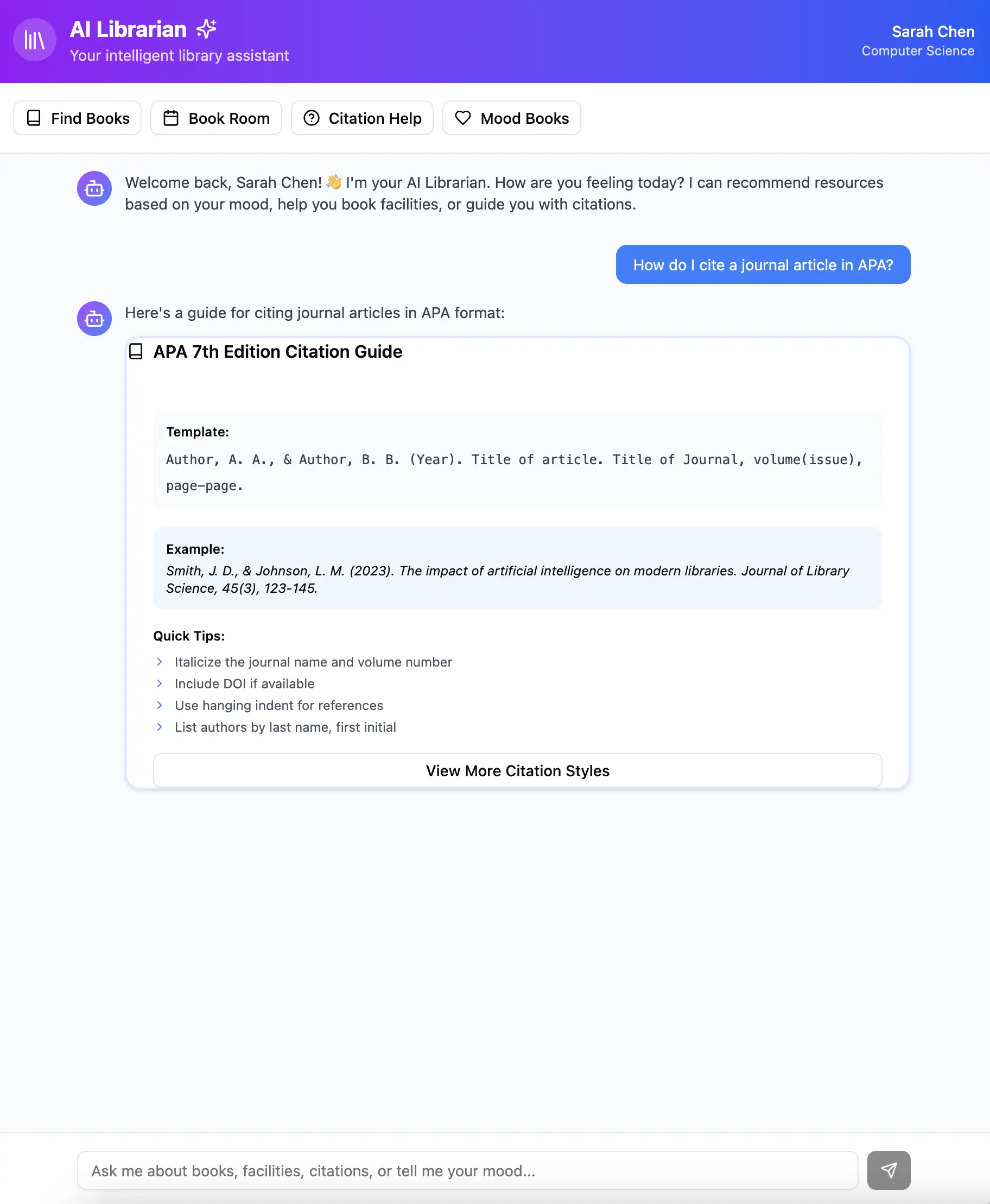
Beyond static chatbots: real integration, real results
Typical university chatbots act as glorified FAQ systems. They respond with links and generic answers. Creating more friction than they solve.
This concept reimagines what’s possible.
Behind the scenes, the AI librarian queries real systems, cross-references student profiles, and responds with relevant, accurate, and helpful information. When Sarah searches, she doesn’t get a link. She gets the result.
Room bookings, citation generation, account status, loan renewals—it’s all connected. Students complete tasks, rather than being pointed somewhere else to do them.
What would actually change?
If implemented at scale, universities could see major shifts in student behavior:
- Increased usage of library services – because it’s intuitive and helpful
- Reduced staff workload – fewer repetitive queries
- Faster, richer research experiences – leading to deeper learning
- Improved student outcomes – less frustration, more engagement
Students would engage earlier and more often with library resources—not just when required, but out of genuine curiosity and need.
The ripple effect
When library services become seamless, students use them more. When students use academic resources effectively, they perform better. When universities provide this kind of intelligent support, they improve satisfaction, retention, and reputation.
This isn’t just about adding AI to a search bar. It’s about rethinking the entire student support model.
Beyond search: a research partner
The most advanced version of this concept evolves from assistant to research partner.
It anticipates needs, flags common mistakes, and recommends resources students didn’t know to ask for. It suggests workshops when patterns emerge. It closes gaps before they widen.
This is the kind of support students expect from modern technology. It’s not science fiction—it’s entirely possible with today’s tools.
Curious how this could work at your university? Let’s explore the possibilities together.